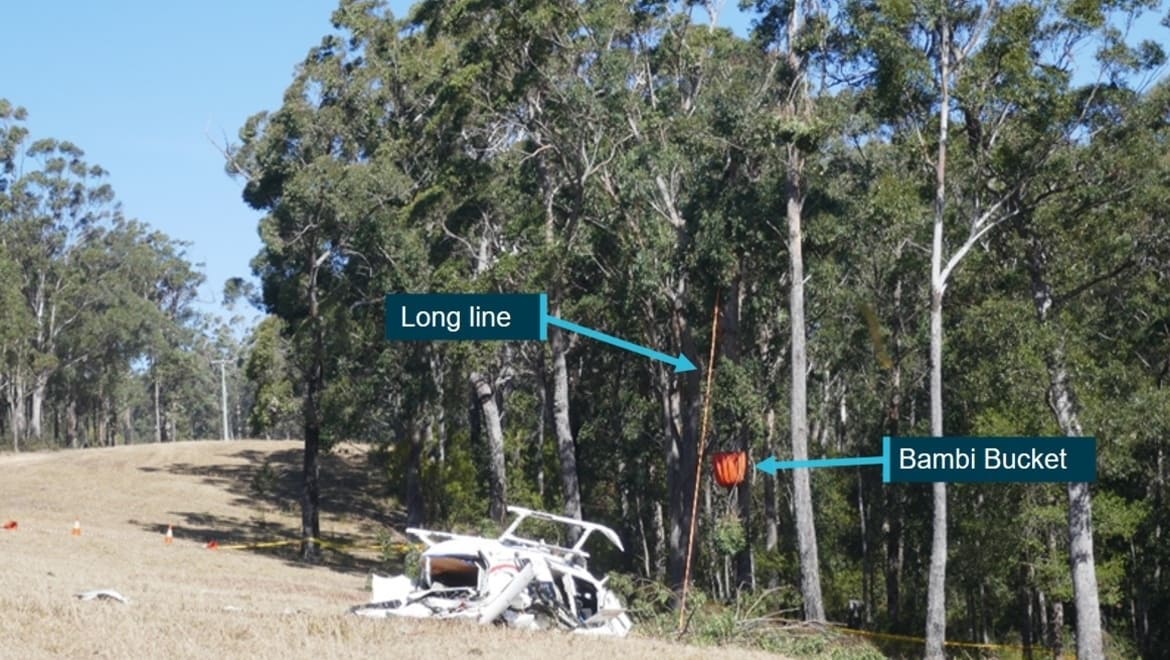
A potentially undiagnosed medical condition likely led to a BK117 pilot suffering a fatal crash while tackling a fire in Ulladulla, NSW in 2018.
An ATSB report into the incident reveals how Allan Tull’s Bambi Bucket became caught in trees causing his helicopter to collide into the ground.
A post-mortem revealed the Sydney Helicopters pilot had two serious heart conditions he was unaware of, however, the investigation was unable to conclude for sure if these particular issues triggered the chain of events that led to his death.
The ATSB’s director of transport safety, Stuart Macleod, said, “Pilots are reminded that some medical conditions may be undetectable by the normal aviation medical screening process and should remain vigilant for any medical symptoms which may be the precursor to a more serious medical event.”
Allan Tull was piloting a Kawasaki Heavy Industries BK117 helicopter, VH-JWB, on the afternoon of 17 August 2018, tackling a fire near Ulladulla.
Tull had just filled its slung Bambi Bucket without incident from a dam and departed on a fifth fire-bombing circuit.
Shortly after, the helicopter diverted off course contrary to the established flight pattern of the Woodburn fire.
The bucket and longline then became caught in trees at the edge of a clearing, causing the helicopter to crash into the ground before coming to rest inverted. The pilot was fatally injured and the helicopter was destroyed.
None of the ground or airborne crews heard any radio transmissions from the helicopter immediately before the accident (during water bombing operations it is standard practice to make a radio call when leaving the circuit for any reason, to inform other airborne assets of the helicopter’s tracking).
In the minutes prior to the accident, the pilot responded normally to a NSW Rural Fire Service Air Attack co-ordinator conducting an ‘operations normal’ radio call and did not report any difficulties at that time.
During the investigation, ATSB investigators did not identify any pre-existing defects with the helicopter that may have contributed to the accident.
“The pilot’s post-mortem identified a focus of acute inflammatory change in the heart muscle, a condition known as lymphocytic myocarditis,” Macleod said. “This condition is capable of causing sudden impairment or complete incapacitation. The pilot is unlikely to have known they suffered from this condition. There are no risk factors for the development of this condition and it cannot be detected by medical screening.”
The pilot’s post-mortem identified coronary heart disease, which is also capable of causing sudden impairment and incapacitation. However, despite the pilot suffering from these two heart-related conditions, there was insufficient evidence to determine if they contributed to the accident.
The experienced pilot, with a total flying experience of approximately 7,750 hours (approximately 1,300 hours experience operating the BK117 and in excess of 3,000 hours of longline experience) was known to use an over-the-counter medication for the treatment of hay fever. Although labelled as non-sedating, this medication was not approved by the Civil Aviation Safety Authority for use while conducting flying operations.
“The pilot was known to have been taking this medication for some time, so any adverse effects on the day of the accident were considered unlikely,” Macleod said.
“However, pilots should also exercise caution when using over-the-counter medications as their availability does not mean they are automatically safe for use while conducting aviation activities.”
Due to the inverted nature of the accident and resulting vertical compression of the fuselage, the accident was not considered survivable. However, evidence from the first responders showed the upper torso restraint (UTR) was worn incorrectly at the time of the accident.
“Although on this occasion the accident was unsurvivable, the use of such a shoulder harness restraint generally reduces the likelihood of fatal head injuries,” Macleod said.
“Pilots are reminded to always use UTRs if they are fitted to the aircraft.”















